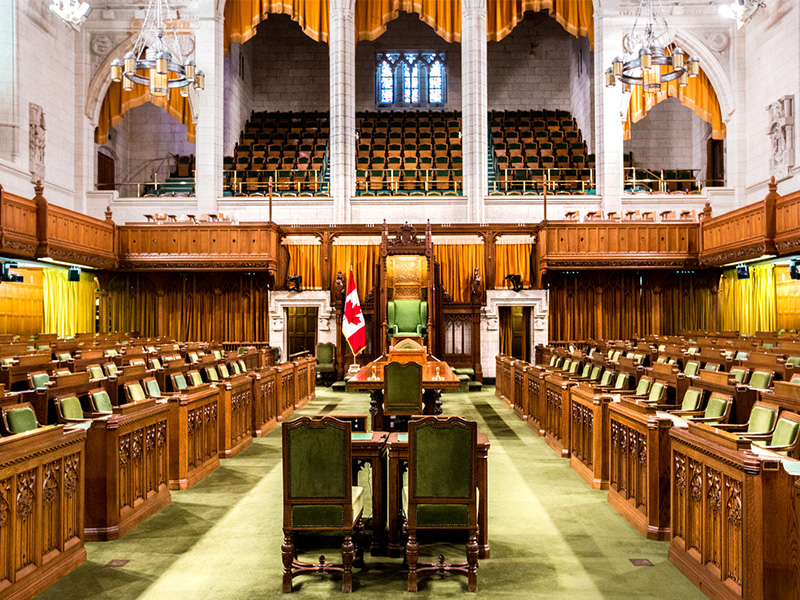
The federal government is considering whether to provide relief to seniors worried about outliving their savings, but who are forced nonetheless to make unnecessary withdrawals from their RRIFs.
Last week, the Department of Finance tabled a report on RRIFs to the House of Commons in response to a motion passed by the chamber last year asking it to study whether the mandatory minimum withdrawal rates continue to meet Canadians’ retirement income needs.
The report examines the age at which RRSPs must be converted to RRIFs, and whether the assumptions underlying the minimum withdrawal rates — an age expectancy of 100, 3% annual real return on an investment portfolio and 2% inflation — are still appropriate.
The report doesn’t offer recommendations, but states that “seniors deserve a dignified retirement free from worry.” It also reaffirmed two of the three assumptions used to set the withdrawal rates.
Under current rules, Canadians generally must transfer their RRSP savings to a RRIF by the end of the year they turn 71, and then begin making withdrawals according to an annual minimum rate, set by age.
“By requiring that contributions to these plans cease and a portion of these savings be drawn each year as income after an individual reaches a specified age, the tax rules ensure that the savings are used for the intended purpose, which is to provide a retirement income, and prevent the preservation of tax-deferred retirement savings for estate purposes,” the study said.
According to the report, the current RRIF “factors,” or minimum withdrawal rates, were determined with the objective of providing retirees a constant stream of income from age 72 to 100, with the maximum factor capped at 20% for ages 96 and older.
“The factors would provide that the individual would have sufficient assets at age 95 to maintain their income until age 100, at which point their assets [in the RRIF] would be completely depleted,” the study said.
However, Canadians’ life expectancy has increased steadily over the thirty years since the modern RRIF withdrawal rates were set. For the 1990–92 period, life expectancy at age 71 was 13.7 years (i.e., living to nearly 85), but for 2018–20, life expectancy at age 71 was 16.2 years (living just beyond age 87).
“Further, while average life expectancy remains in the eighties for men and women, we see that individuals are increasingly likely to live into late nineties and beyond,” the report indicated. For 2018–20, Canadians’ survival rate to 100 was 3.4%, up from 1.8% in 1990–92.
The study found that on a long-term historical basis, a 3% average annual real rate of return remains a “reasonable assumption.” Retirees could expect a higher return on a riskier portfolio in the early years of their retirement and a lower rate of return later in their retirement on a very conservative portfolio.
The study also suggested that, based on longer-term trends, “inflation [expectations] of around 2% remains the norm,” even though the consumer price index (CPI) rose 6.8% on an average annual basis in 2022, a 40-year high. The study indicated that the average annual increase in CPI was 3.99% from 1973–2022, and 2.09% from 1998–2022.
According to the report, the median retirement age in Canada was 64.8 in 2022, up from 61.1 in 2007, but largely unchanged from the median retirement age of 65 in 1978, when RRIFs were first introduced.
Median retirement age declined from the late 1970s to the mid-1990s, remained steady for about a decade, and then began climbing again. The recent increase may be attributed to “increased longevity, the decline in workplace pension coverage and the changing nature of work,” the study suggested.
As part of its study, Finance consulted with experts in seniors’ issues and retirement savings and received submissions from other interested parties and individuals.
Some stakeholders suggested eliminating minimum withdrawals and/or raising the RRIF conversion age to provide more flexibility to retirees. Others indicated they were concerned about the equity effects of reducing, delaying or eliminating RRIF withdrawals, where the benefits would accrue disproportionately to high-income seniors.
The government said it “will consider the findings of this study and continue to work to ensure the RRIF framework is meeting its objective of supporting seniors’ retirement income and is doing so in a way that is as fair and effective as possible.”
The study indicated that RRSPs and RRIFs combined are one of the government’s largest tax expenditures, projected to represent $25.8 billion in forgone federal revenues in 2023.